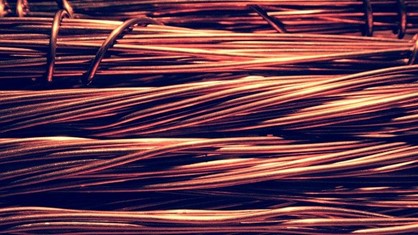There are more brass items in your home than you probably think. The knobs and hinges on your door, the metal frame under your bed and lounge tables, your curtain rods, and some of your furniture pieces–they are most likely made of brass. While this metal is undoubtedly beautiful, it has its fair share of undesirable qualities, the most apparent of which is its susceptibility to tarnishing.
Like any other copper alloy, brass tarnishes when exposed to the air for a prolonged period. The oxygen in the air combines with the copper in brass to form copper oxide, a substance that gradually thickens and conceals the brass item’s shiny surface. As a result, the object loses its brilliance. Many describe brass as gold-like because some of its types have the same color and sheen as gold. The only difference is that brass loses its luster over time, while gold doesn’t.
The good news is there are easy ways to bring your brass items back to their glittery state. Like most other non-ferrous metals, you can polish brass using standard metal polish, and you don’t have to go far to obtain one. You can prepare your solution using products available in your home. Here’s how to formulate your homemade brass cleaner and polish:
Salt and Lemon Mixture
– Salt and lemon extract are both abrasive substances. When combined, they form a substance harsh enough to dislodge the copper oxide buildup from the surface of your brass item. Not only are these materials accessible, but they are also more affordable than commercial polish.
Ketchup
– Did you know that ketchup has a pH of 3.85? That acidity level makes it an excellent metal polish. While it may not be as effective as today’s commercial metal polish, it’s cheaper and exciting to experiment with.
Baking Soda and Lemon Paste
– Replace the salt in the first formulation with baking soda. You probably use baking soda to clean your kitchen countertop, fridge, or stove, and it works all the time. That’s because baking soda is sodium bicarbonate, a substance that can neutralize both acids and bases. Mixed with lemon, you can create the ultimate brass polish.
Vinegar, Flour, and Salt
– We all know that vinegar is acidic. Salt is quite harsh, too. If you want to make a paste, so your polish sticks on the surface of your brass item and does not evaporate when you let it sit for an hour, add flour.
Tomato Sauce and Paste Mixture
– With the same ingredients as those of ketchup, you can expect the same effect on brass when you apply a tomato sauce and paste solution. You’ll find it even more efficient since tomato paste is more concentrated than ketchup.
How to Clean Brass
Now that you already have a homemade brass cleaner, all you need to do is to follow this easy-to-do brass cleaning procedure:
Prepare all the brass items that need cleaning. The last thing you want is to throw away your homemade metal polish before realizing that there are more items to clean.
Separate the pure brass items from the brass-clad ones. The latter most likely have a thin layer of brass on its surface, and buffing too hard could peel it off. Separating them allows you to apply the right pressure on each item.
Wash your brass items with soap and water to remove all dirt and grease. Brass cleaners don’t adhere to oily surfaces. Also, if there are dust particles left, they might scratch the surface of your brass items as you scrub with the cloth.
After carefully rinsing the brass items with clean water, dry them thoroughly. You don’t want to apply the brass cleaner on your brass items’ wet surface. Moisture will reduce its effectiveness.
Once your items are ready, apply the cleaner on all surfaces and let it sit for at least 10 minutes.
Get a clean cloth and buff your brass items until it becomes shiny again. Don’t leave any section unpolished to achieve the best result.
Where to Buy Brass Supplies
You probably noticed that some of the brass items you have tarnish faster than others. This variation has to do with quality. How the brass that makes up those items were manufactured can affect its tarnish resistance.
When thinking of buying brass furniture or fixture, take your search up a notch and be meticulous about where the raw materials used to make the item came from. If they came from a reputable supplier like Rotax Metals, you could be sure that your furniture or fixture not only makes a perfect addition to your home but last long as well.
Check how many years the supplier has been in operation. If possible, take a peek into their brass sales and find out what supplies most customers buy. That way, you’ll have an idea how much they know about copper alloys like brass and what advanced methods and equipment they use. You’ll never go wrong with a manufacturer that has at least half a century of professional experience in metal processing and distribution.




